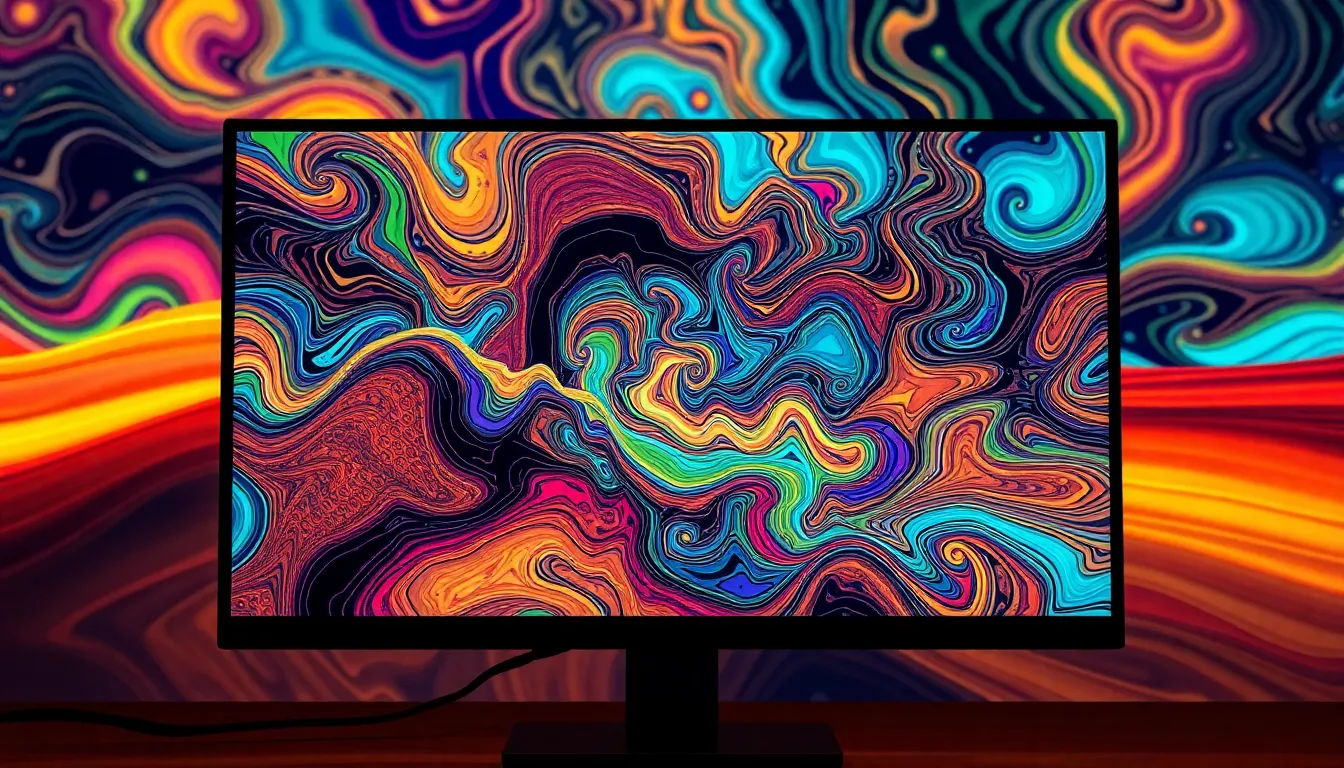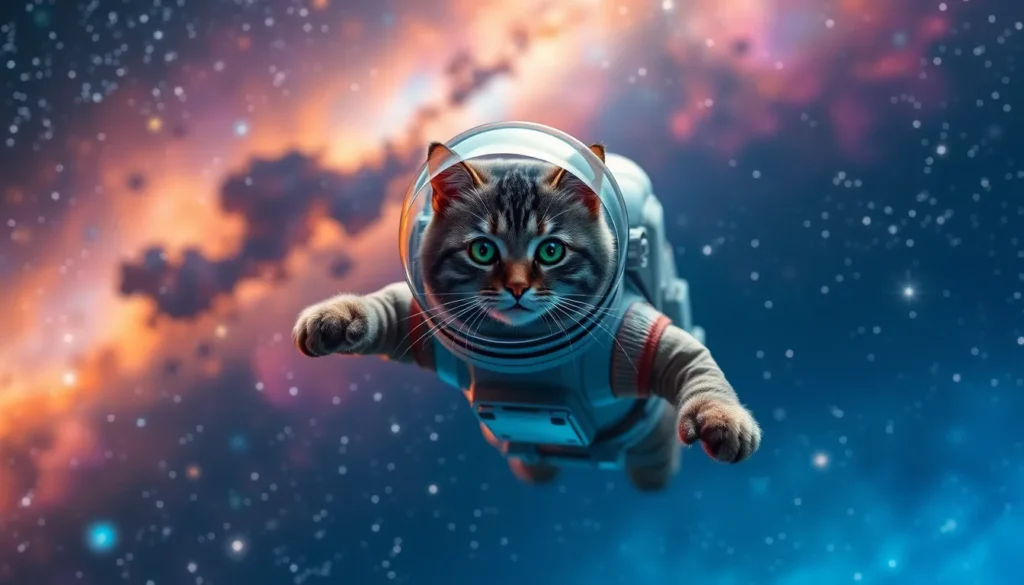Imagine turning your wildest dreams into stunning visuals with just a few words. With AI image generators from text, that’s no longer a fantasy—it’s a reality! These clever tools transform simple descriptions into breathtaking images, making creativity as easy as typing a sentence. Whether you want a cat wearing a spacesuit or a serene landscape at sunset, these AI marvels can whip it up faster than you can say “artistic genius.”
Table of Contents
ToggleOverview of AI Image Generators
AI image generators transform text descriptions into impressive visuals. Users can simply type a phrase and receive creative images that illustrate their ideas. Notable examples include generating an image of a dog wearing glasses or a whimsical fairy forest.
These tools utilize advanced algorithms, such as deep learning and neural networks, to analyze and interpret natural language input. By understanding context and relevant details, they produce images that accurately reflect user descriptions.
Many AI image generators incorporate extensive datasets to enhance their output quality. These datasets consist of millions of images paired with descriptions, allowing the models to learn various styles and themes.
Speed is a significant advantage with AI image generators. Users can generate images in seconds, making them ideal for rapid prototyping or brainstorming sessions. Creative professionals, such as designers and marketers, find these tools particularly beneficial for visualizing concepts quickly.
Real-world applications showcase the versatility of AI image generators. Illustrators use them to inspire artwork, educators apply them in teaching aids, and businesses benefit by creating graphics for social media campaigns. The ability to create unique and tailored images supports a variety of creative endeavors.
Accessibility is another appealing aspect of AI image generators. Many platforms offer user-friendly interfaces that require no technical background, allowing anyone to harness this technology.
As this technology evolves, the possibilities for AI image generators expand, continually pushing the boundaries of creativity and visual storytelling.
How AI Image Generators Work

AI image generators create visuals from textual descriptions by leveraging powerful algorithms. These systems employ various techniques to convert natural language into meaningful images.
Natural Language Processing
Natural Language Processing (NLP) plays a crucial role in AI image generation. NLP allows machines to understand and interpret user input accurately. It processes the meaning behind phrases and identifies key elements in the text. For instance, when a user types “a dog in sunglasses,” the system recognizes “dog” and “sunglasses” as primary components. By utilizing language models, AI image generators derive semantics from text. The integration of NLP ensures that generated images align closely with user expectations.
Image Synthesis Techniques
Image synthesis techniques determine how AI constructs visuals from processed text. Common methods include Generative Adversarial Networks (GANs) and diffusion models. GANs consist of two neural networks competing against each other to create realistic images. Diffusion models gradually enhance images through noise reduction. With both approaches, AI can produce high-quality, intricate visuals. These techniques rely on extensive datasets containing image-description pairs, which improve their output quality. Users benefit from diverse image styles, ranging from realistic to abstract.
Popular AI Image Generators
AI image generators have gained popularity due to their ability to transform text into vivid visuals. Various tools stand out for their features and versatility.
Tool 1: Features and Benefits
DALL-E 2 excels in generating high-quality images from detailed text prompts. Users appreciate its vast knowledge base, which allows it to create imaginative visuals, such as futuristic scenes or mythical creatures. Customization options enable adjustments to style and composition, enhancing user experience. This tool supports various art forms, making it suitable for professionals and hobbyists alike. Rapid generation times allow users to quickly explore different concepts during projects.
Tool 2: Features and Benefits
Midjourney focuses on artistry and aesthetics, offering unique visual interpretations of text prompts. Its user interface fosters collaboration, allowing artists to refine their ideas with community feedback. AI algorithms emphasize style transfer, producing images that replicate famous art techniques. Users benefit from simple commands, which streamline the creation process. Quick turnaround times ensure creativity flows without interruption. Additionally, the platform encourages experimentation, inspiring users to push creative boundaries.
Applications of AI Image Generators
AI image generators serve numerous applications across various sectors. These tools streamline the creative process, transforming text into visuals seamlessly.
Creative Industries
Creative professionals utilize AI image generators to enhance their work. Artists benefit from immediate access to unique images that inspire their projects. Graphic designers leverage these tools for quick mockups or experimental visuals. Illustrators often incorporate AI-generated images into their portfolios, showcasing innovative concepts. Photographers explore new styles, generating visuals that may not be easily captured in real life. Overall, AI image generators unlock unprecedented creative possibilities while saving valuable time.
Marketing and Advertising
In marketing and advertising, AI image generators play a pivotal role. Campaigns rely on eye-catching visuals to engage audiences. Marketers produce tailored images that resonate with specific demographics, driving greater interaction. Social media managers often create content on-the-fly, adapting visuals to trends or events swiftly. Advertisers use these tools to experiment with concepts before launching full-scale campaigns, ensuring optimal effectiveness. AI-generated visuals contribute significantly to brand storytelling, establishing a consistent and compelling narrative.
Challenges and Limitations
AI image generators face several challenges and limitations that affect their performance. One primary difficulty is accurately interpreting complex or ambiguous text descriptions. If the input contains vague language, the generated images may not align with the user’s intent, resulting in unsatisfactory outputs.
Dataset limitations pose another significant challenge. The training data must encompass a wide variety of images and descriptions to produce high-quality results. In cases where the dataset lacks diversity, the generator may struggle with certain subject matter, leading to repetitive or unoriginal visuals.
Additionally, computational resources significantly impact image generation quality and speed. High-quality image synthesis often requires powerful hardware and extensive processing time. Users without access to advanced technology may experience delays or subpar results.
Ethical concerns are another area of contention. AI-generated images may inadvertently replicate biases present in training datasets, resulting in outputs that reflect stereotypes or inaccuracies. This issue raises questions about accountability and the responsible use of generated content.
Moreover, copyright issues can arise when AI image generators inadvertently produce images resembling copyrighted works. This risk can complicate the use of generated images in commercial applications, creating legal challenges for creators and businesses.
Lastly, the creativity of AI image generators often hinges on user input. When users rely on default settings or simple prompts, the outputs may lack originality or depth. Engaging with these tools requires users to input thoughtful, descriptive prompts to achieve the best results.
Addressing these challenges is crucial for improving the reliability and quality of AI image generators. These limitations highlight the need for ongoing advancements in technology and ethical guidelines as AI continues to evolve in creative fields.
Future of AI Image Generation
AI image generation is rapidly evolving, opening new avenues for creativity and innovation. Significant advancements will emerge in algorithms, increasing the accuracy of visual interpretations from text. Users can expect AI systems to better understand context, enhancing the output quality and relevance.
Enhanced capabilities will allow AI generators to create more complex images with richer details. As datasets become more diverse, the quality and variety of generated images will improve. Developers will likely focus on reducing biases present in training sets, addressing ethical concerns while promoting inclusivity in outputs.
Accessibility is set to broaden as more user-friendly platforms emerge. Increased integration of AI tools within existing creative software will streamline workflows for professionals. Marketers and designers can anticipate quicker turnaround times and real-time adaptations to trends.
Collaboration features will become more prominent, allowing artist communities to interact and share insights. Feedback systems can facilitate more personalized outputs, encouraging users to experiment with their creativity. Educators may leverage these advancements to enhance learning materials, making visual storytelling more engaging.
Real-time image generation is another potential breakthrough in the near future. Such technology could transform industries by providing instant visuals for news articles or social media content. Users may find their creative processes significantly accelerated, as AI generates tailored visuals at unprecedented speeds.
Exploration of new fields will unveil unique applications beyond current creative industries. Emerging sectors might see AI image generation utilized in virtual reality and gaming, enriching user experiences. As technology progresses, the relationship between AI and human creativity will continue to deepen, reshaping how visuals are conceived and produced.
AI image generators are transforming the creative landscape by enabling users to produce stunning visuals from simple text prompts. Their speed and accessibility make them invaluable tools for professionals and hobbyists alike. As technology continues to evolve, these generators will likely become even more sophisticated, offering enhanced capabilities and improved outputs.
The ongoing development of algorithms and diverse datasets will address current challenges, paving the way for more accurate and creative interpretations. With the potential for new applications in various fields, the future of AI image generation promises exciting possibilities that will redefine how visuals are created and shared.








